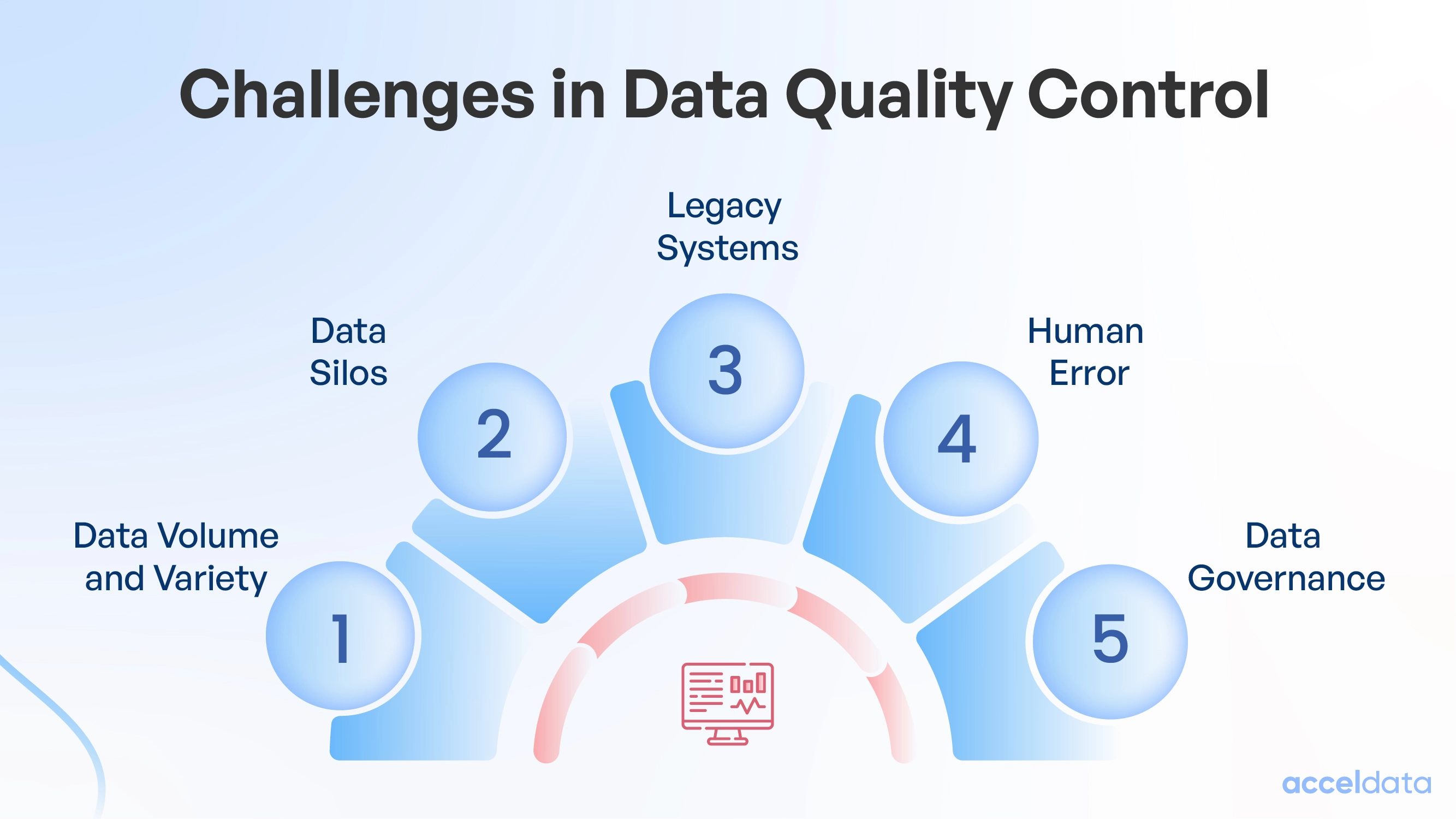Data Quality Control: Ensuring Accuracy and Reliability

In the digital age, data reigns supreme. From small businesses to multinational corporations, the ability to harness data effectively can be the difference between success and failure. However, the sheer volume of data generated daily presents a challenge: ensuring its quality.
Data quality control is the linchpin of any data-driven operation, safeguarding against inaccuracies, inconsistencies, and errors that can undermine decision-making and operational efficiency. In this comprehensive guide, we delve into the intricacies of data quality control, exploring its significance, standards, methodologies, and tools for implementation.
Understanding Data Quality Control
At its core, data quality control includes processes and measures aimed at maintaining data accuracy, completeness, consistency, and reliability. It involves a systematic approach to identifying, rectifying, and preventing errors or discrepancies in data sets, ensuring they remain fit for purpose. In the absence of a robust data quality management framework or mechanism, organizations risk basing critical decisions on flawed or misleading information, with potentially dire consequences for performance and competitiveness.
Challenges in Data Quality Control
Despite its importance, data quality control poses several data quality issues and challenges for organizations:

Data Volume and Variety: The sheer volume and variety of data generated from different sources make it challenging to maintain consistency and accuracy.
Data Silos: Data silos, where information is isolated within different departments or systems, hinder cross-functional collaboration and data integration efforts.
Legacy Systems: Outdated legacy systems often lack the capabilities to perform advanced data quality checks, leading to inconsistencies and errors.
Human Error: Manual data entry and processing increase the likelihood of human error, resulting in data inaccuracies and inconsistencies.
Data Governance: Inadequate data governance frameworks and policies can undermine data quality efforts, leading to compliance risks and regulatory issues.
Data Quality Metrics and Best Practices
Data quality standards serve as benchmarks for evaluating the reliability and usability of data within specific contexts or industries. While standards may vary across domains, certain principles remain universally applicable:
Accuracy: Data should reflect reality and be free from errors or distortions that could mislead decision-makers.
Usability: Data should be accessible, understandable, and actionable, supporting effective decision-making and analysis.
Consistency: Data should exhibit consistency in format, structure, and semantics, promoting interoperability and coherence.
Completeness: Data should encompass all relevant information necessary for its intended purpose, with no significant gaps or omissions.
Timeliness: Data should be up-to-date and relevant to the current context, minimizing the risk of basing decisions on outdated information.
Adhering to these principles empowers organizations to leverage data as a strategic asset, driving innovation, efficiency, and competitive advantage.
Key Components of Data Quality Control

By addressing key components systematically, organizations can mitigate risks associated with data inaccuracies and derive actionable insights for informed decision-making. Here are some of the core key components of data quality control.
Accurate Data Capture and Formatting
Ensuring data is captured correctly at the point of entry, with appropriate formats and standards in place. Addressing issues such as missing information, erroneous entries, and inconsistencies in data structure.
Validity and Integrity Checks
Verifying the integrity of data by detecting and correcting inaccuracies, outliers, and invalid values.Implementing validation rules and algorithms to ensure data conforms to predefined criteria.
Consistency and Standardization
Maintaining consistency across datasets and systems to facilitate seamless integration and analysis. Standardizing data formats, terminology, and coding schemes to enhance interoperability and understanding.
Completeness and Relevance
Assessing data completeness to ensure all required fields or attributes are populated and relevant to the intended purpose. Eliminating redundant or obsolete data that adds noise and detracts from analytical insights.
Data Quality Control Tools and Technologies
A wide array of data quality tools and technologies are available to support quality control efforts, including:
Data Quality Management Platforms: Comprehensive platforms that offer features such as data profiling, cleansing, validation, and monitoring.
Data Integration Tools: Tools that facilitate data integration and transformation, ensuring consistency and accuracy across disparate data sources.
Data Quality Assessment Tools: Software applications designed to assess and score data quality based on predefined metrics and rules.
Data Governance Solutions: Platforms that enable organizations to establish and enforce data governance policies, roles, and responsibilities.
Organizations also rely on data quality frameworks to establish robust systems that ensure data integrity throughout their operations. These frameworks provide a structured approach, defining key criteria, metrics, and processes for evaluating and maintaining data quality.
Data quality control technologies play a pivotal role in ensuring data reliability, accuracy, and consistency. These technologies encompass a range of processes, tools, and methodologies designed to identify and rectify errors, inconsistencies, and anomalies in datasets.
Acceldata's data observability platform stands at the forefront of this domain, offering comprehensive solutions for monitoring, managing, and optimizing data quality in real time. It enables users to eliminate unplanned outages, scale their workloads, and reduce business costs by offloading unnecessary software.
Data Quality Control in Practice: Examples
Here are some examples that highlight the diverse applications and critical importance of data quality control across industries for informed decision-making and operational excellence.
Marketing Analytics: Implementing data quality checks to ensure accuracy and consistency in customer demographic data, enabling targeted marketing campaigns and personalized messaging.
Healthcare Compliance: Validating patient data against regulatory standards and clinical guidelines to ensure compliance with data privacy regulations and enhance patient safety.
Financial Reporting: Conducting data quality assessments on financial transactions and reporting systems to minimize errors and discrepancies in financial statements, ensuring regulatory compliance and investor confidence.
These examples underscore the diverse applications of data quality control across industries and highlight its pivotal role in driving organizational performance and competitiveness.
Conclusion
In an increasingly data-driven world, the importance of data quality control cannot be overstated. By establishing robust processes, adhering to standards, and leveraging advanced tools and technologies, organizations can ensure the accuracy, reliability, and usability of their data assets. Whether in marketing, healthcare, finance, or research, effective data quality control serves as the cornerstone of informed decision-making, operational excellence, and strategic innovation. As organizations continue to harness the power of data for competitive advantage, prioritizing data quality control will remain a critical imperative for success in the digital age.
Harnessing the Power of Data Observability to Elevate Data Quality Control
In today's dynamic data landscape, the synergy between data observability and data quality control emerges as a linchpin for organizations striving to unlock the full potential of their data assets. While data quality control ensures the accuracy, completeness, and reliability of data, data observability offers a holistic view of data health and utilization across the entire data ecosystem.
By harnessing the capabilities of data observability platforms like Acceldata, organizations can not only enhance data quality but also gain valuable insights into data lineage, dependencies, and anomalies in real time. This proactive approach enables timely detection and resolution of data quality issues, preempting potential disruptions and safeguarding the integrity of decision-making processes.
Furthermore, the integration of data observability with data quality control empowers organizations to adopt a continuous improvement mindset, driving iterative enhancements in data quality practices and operational efficiency. Through comprehensive monitoring, analysis, and optimization of data pipelines, organizations can evolve from reactive firefighting to proactive data stewardship, maximizing the value and impact of their data investments.
In essence, the convergence of data observability and data quality control represents a paradigm shift in how organizations manage and leverage their data assets. By embracing this symbiotic relationship, organizations can navigate the complexities of the data landscape with confidence, agility, and resilience, positioning themselves for sustained success in an increasingly data-driven world.


.png)





.webp)
.webp)